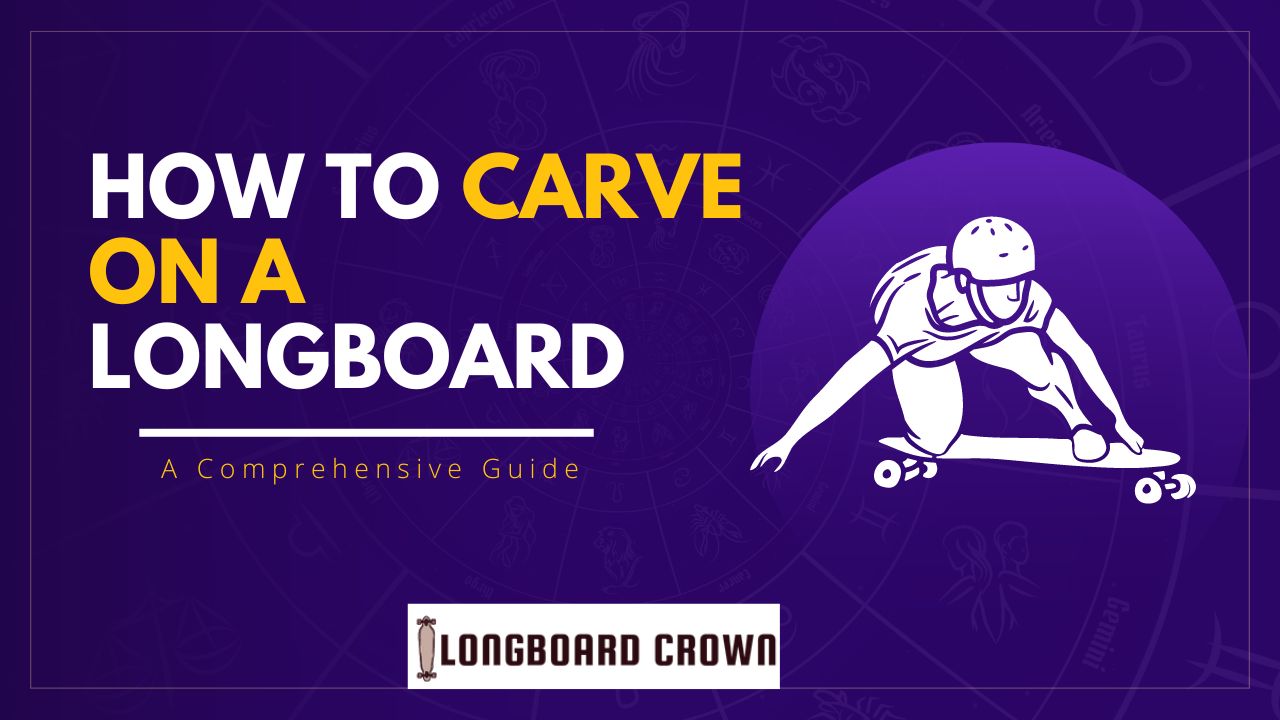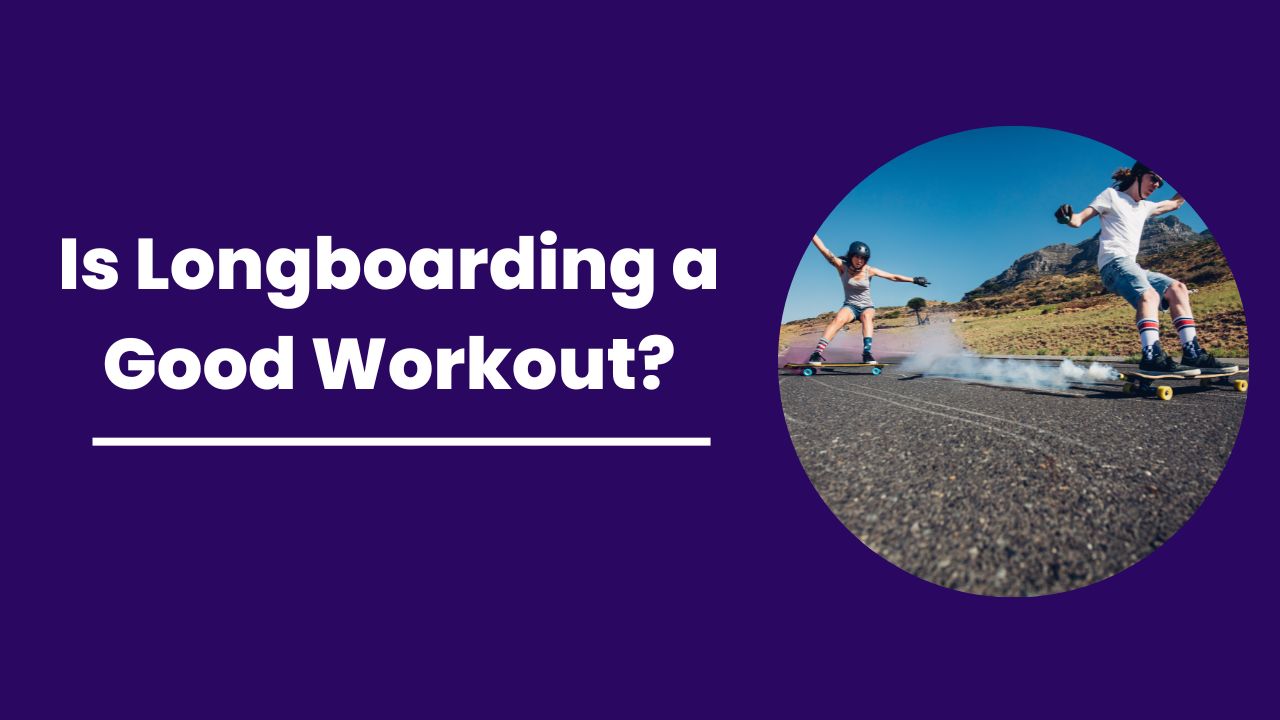Carving is becoming more popular in longboarding because it looks cool and allows riders to mix up their riding style. But while most people think carving on a longboard means only having the board do the work, we believe otherwise.
So, if you want to look fantastic and know how to carve on a longboard, you have arrived at the right place.

Here, we will discuss the step-by-step approach to mastering the art of carving on a longboard. But besides the steps to carve on a longboard, we will share some mistakes and tips that can help you improve at carving.
So, without wasting any time, let’s delve in.
Contents
What Does It Mean to Carve on a Longboard?
Carving is a fundamental longboarding skill. In fact, it is the first trick many people learn on longboards. The term ‘carving’ refers to maneuvering the longboard back and forth and going around obstacles. It basically involves shifting your weight back and forth because carving allows you to make turns on your longboard.
Carving is an essential skill for general commuting and weaving away through obstacles. But besides this, carving provides a necessary base for longboard dancing.
So, keep reading if you want to know how to carve on a longboard because once you’ve got the hang of it, you will have a lot of fun.
How to Carve on a Longboard?
As mentioned earlier, the act of carving means you are turning back and forth, sometimes in rhythm and sometimes not. But often, when a snowboarder tries to carve on a longboard, he’ll use his shoulders more and forget about his feet.
Similarly, sometimes, people tend to turn only with their ankles on a longboard. But since your feet aren’t strapped in on longboarding surfing, you must ensure you are using your entire body while carving on a longboard.
So, let’s break down the art of carving on a longboard in straightforward steps.
- Once you’ve taken a couple of pushes, your first task is returning to a comfortable stance.
- And when you are turning on your toes (what longboard experts call toeside), you should turn your shoulders so that your front shoulder leads a little more than the other shoulder. However, sometimes, you can turn it over. And that turn of your shoulders and that pressure on your toes will also cause your hips to rotate. Doing this will eventually cause the longboard to shift to your left.
- Now, to get back to your right, you will turn your shoulders back out, open your chest, and put pressure back on your heels. However, while doing this, you want to ensure you keep your knees bent, your eyes in the direction you want to go, and your hands out.
Thus, when you start carving on a longboard, you won’t be throwing a lot and moving your body around a ton. But since practice makes a man perfect, better carving on a longboard will eventually come with more practice and time.
Some Pro Tips to Consider for Carving on a Longboard
Besides the above-discussed steps to carve on a longboard, we have observed multiple longboard experts.
So, we have found the following attributes when they carve on a longboard:
- Sometimes, longboard riders put a little more pressure on their front foot when they turn toeside and a little more pressure on their back foot when they turn heel side. This way, they can be more comfortable and get more power out of those big heel-side calves. So, they can easily dive low into those toesides.
- Many people find it easier and an excellent way to help them learn is to look where they want to go. This way, when they turn, they do not only turn their shoulders, but they turn their heads as well.
- Besides this, some people also prefer shifting their weight back and forth between feet.
- Go in a comfortable environment to practice carving on a longboard.
- Always wear a helmet to stay safe.
Common Mistakes That Happen During Carving on a Longboard
Besides observing the longboard experts, we have also observed a few mistakes beginners make while carving on a longboard.
So, let’s get to those mistakes.
- Overcompensating is probably the most common mistake among beginners. It means putting too much pressure on the toes or turning too hard on the shoulders.
- In the beginning, longboard riders are not used to how quickly or slowly the longboard reacts. So, they often feel like they are falling out of the turn.
- If you don’t follow with your shoulders or keep your eyes where you want to go, you can fall or run into something unexpected.
Thus, we recommend reading the above-discussed mistakes before carving on a longboard. This way, you can avoid those mistakes quickly and get better at carving.
Read More:
In a Nutshell – The Bottom Line
Carving is a great way to get the most out of your longboard. Carving allows you to make more turns with less effort and control, which can be a real asset when going downhill on a big hill or even just cruising at a slow pace. The best part about carving is that it’s also super fun!
Carving is also a very versatile movement for you as an individual because it can give you more freedom to decide how much or how little power you need from your legs and your core muscles. Doing carving on longboards can help improve your overall balance if done correctly.
All in all, carving on a longboard is undoubtedly one of the basic longboarding tricks. But, like every other thing, it takes a lot of practice. Everybody can’t be Tony Hawk, but it’s good if you are.
Anyway, it is normal if you are not good at carving on the first attempt. Therefore, keep practicing, keep trying and stay safe because as long as you fulfill all the basic requirements, you’ll be good to go.
1. Can you carve on a cruiser board?
Some cruiser boards have a surf-inspired design with a swallowtail and pointed nose. So, besides having a visually appealing design and being suitable for relaxed cruising, such boards are ideal for flowy carves.
2. Does carving on a longboard slow you down?
To carve, you must slide your wheels slightly throughout each curve, which somewhat slows you down and maintains control. With practice, you’ll discover that you can alter your carving to drastically reduce the amount of speed you lose with each turn.
3. How to push on a longboard?
As the name depicts, ‘pushing’ is the longboard activity that will help you attain the required speed. That’s how you will start moving around on a longboard. But how does pushing happen?
Pushing happens when you take one foot off the longboard, push it against the pavement, and roll forward while your foot stays in place. So, you transfer the motion from one to the other by pushing.
Generally, people tend to push on a longboard with their front or dominant foot on the board. So, when it comes to pushing, the dominant foot is the first part of the stance for most people. But besides the dominant foot, the back leg of most people starts around the trucks. This way, when they push backward, they extend forward.
4. How to ride a longboard for beginners?
It’s challenging to answer this question in a nutshell. But we can give a few pointers regarding riding a longboard for beginners.
- Starting your trip with a longboard might be exciting, but you should never lose sight of the possibility that you could get wounded at any time or location. So, put your feet in the middle of the deck as you begin to travel with a board.
- Professionals frequently do tricks with their feet on the edge, although this is not advised for casual or new users.
- The best thing a board user can do while longboarding is to be prepared. So, we recommend wearing knee, shoulder, and elbow padding while longboarding or skateboarding. This way, you won’t experience any damage because you will be well protected. Plus, you should wear strong clothing to prevent cuts if you run into thorny plants or fall off.
5. What is a longboard carving or carving longboard meaning?
Carving on a longboard is undoubtedly one of the basic longboarding tricks. This longboarding term refers to maneuvering the longboard back and forth and going around obstacles. You shift your weight back and forth in carving because carving allows you to make turns on your longboard.
6. What longboard shape is best for carving?
It is challenging to name the best of the best when there are a lot of longboard options for carving. However, we have found the following longboard entries as the best for carving after researching for several hours:
- Apex 40 DoubleConcave Longboard.
- Derringer 33 Longboard.
But besides the entries mentioned above, the ‘37 and 37 Bamboo,’‘40 Bamboo,’‘43 and ‘43 Bamboo’ and ‘46 Bamboo’ are the best pintail longboard modes for cruising and commuting.

